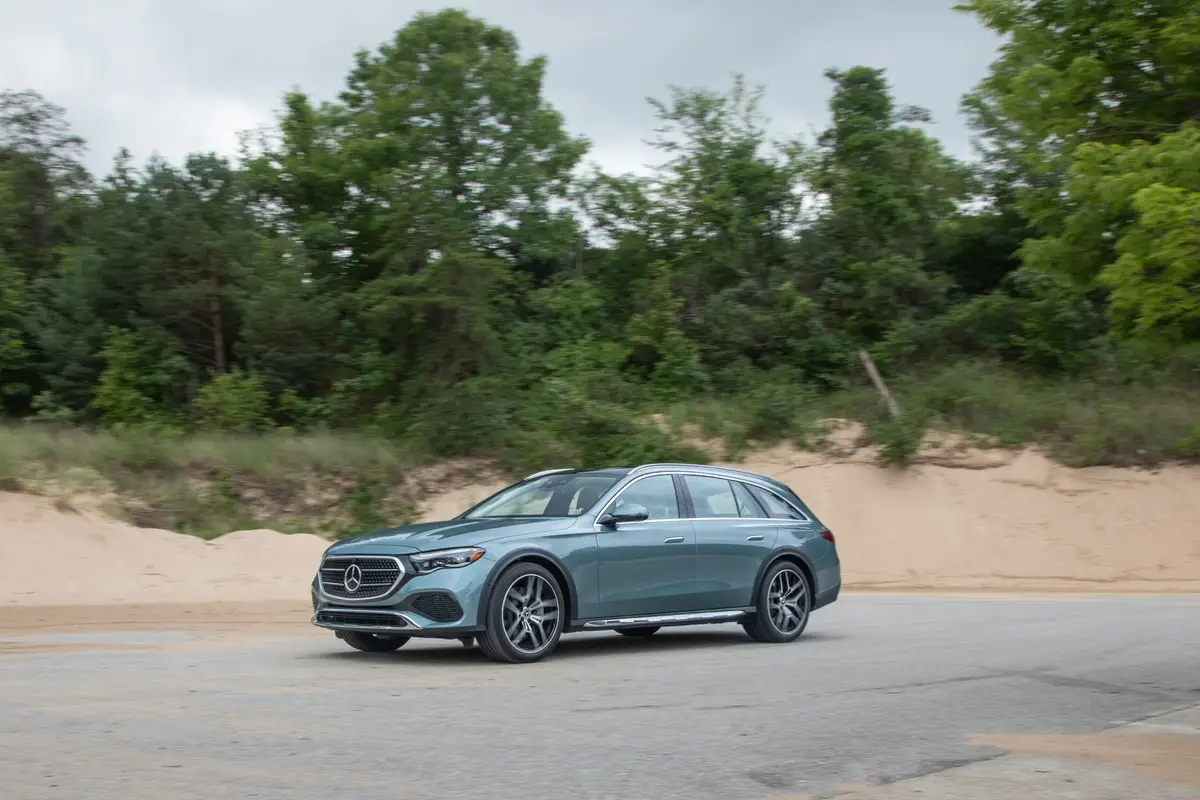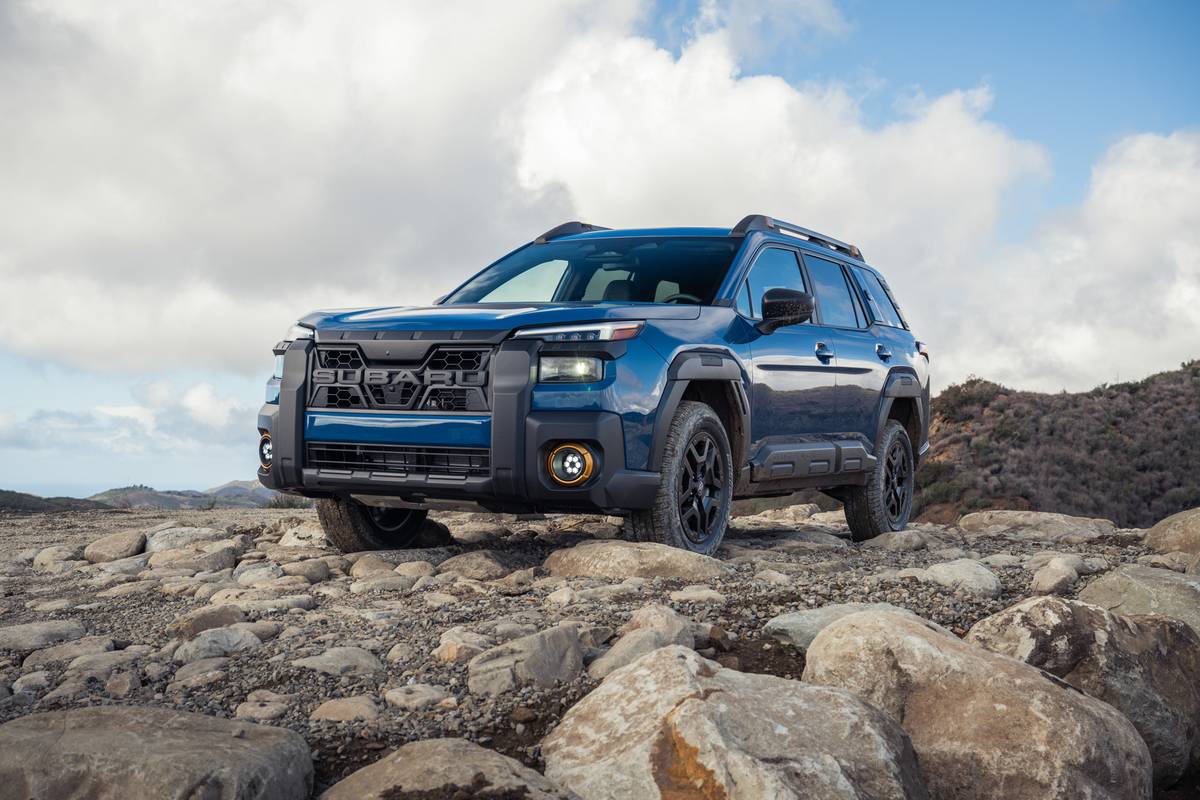Cincinnati.com's view
Ah, the winds of fashion. I can barely remember when Volkswagen made a splash with its hatchback Rabbit, a car that did much to educate the American public – to say nothing of manufacturers – about the virtues of clever packaging. Hatchbacks had their day, and in recent times have become as scarce as a good martini at a Taliban convention.
Mazda has the spark that could ignite a new-found appreciation for the breed, which combines the sporty looks of a coupe or sedan with some of the load-toting functionality of a wagon.
The company seems a little ambiguous about how to market the new Protege5, at times referring to it as a five-door, in other places as a sport wagon. Given their ambivalence, I’ll take up the challenge and label it a five-door hatchback, mainly because it doesn’t look as elongated as what we generally expect a wagon to be, nor does it have the volumetric qualifications to compete directly with sport wagons or crossovers.
With the wheels pushed out toward the corners in the best cab-forward design thinking, the Protege5 actually looks rather bobtailed. Though it shares a 102.8-inch wheelbase and many mechanical aspects with the Protege sedan on which it’s based, it winds up being nearly five inches shorter overall – not the usual approach to creating a wagon spin-off.
Furthermore, the 30-somethings at whom Mazda is taking a bead with this piece are probably more likely to buy something called a “five-door” than a wagon. I wouldn’t be surprised to see the median-age buyer turn out to be younger than the target group, because the Protege5 combines an active-lifestyle practicality with styling cues that are the antithesis of subtle – though well-penned, especially the rear aspect – and a very friendly price.
The Protege5 is assembled in Hiroshima and sent here in only one series, though of course there’s a laundry list of extras that can be port – or dealer – installed. The basic machine goes for $16,825 with freight. That includes such things as air conditioning, 4-speaker AM-FM-CD stereo, 60/40 fold-down rear seats, 16-inch alloy wheels with V-rated 195/50 all-season rubber, fog lamps, rear spoiler, remote keyless entry, power windows and locks, cruise control, rear window defogger, 4-wheel disc brakes – all things often treated as options in this part of the market.
The engine is a 2-liter inline twin-cam four, with aluminum head and cast iron block. With a relatively modest 9.1:1 compression ratio, it’s happy with regular gas and produces a respectable, if not dazzling, 130 hp (@6,000 rpm) and 135 foot-pounds of torque (@4,000).
When you look at the weight of the car – 2,716 pounds with the five-speed manual transmission, 2,749 with automatic – you realize that straight-line performance is not going to live up to the promise of the well-muscled body.
Indeed, even with the slick-shifting five-speed, I had to really work at it to get under 10 seconds in the 0-60 exercise, shifting just beyond t he power peak. The engine didn’t seem all that eager to explore the 6,000-rpm neighborhood, but at least I wasn’t bumping into the 6,500-rpm rev limiter as I’ve done with more exuberant powerplants. Stopwatch aside, the car feels peppy from behind the wheel, thanks to a stout 4.1:1 final drive ratio and well-chosen first, second and third gear ratios. Both fourth and fifth are overdrive cogs.
The clutch was light and predictable as soon as I adapted to its fairly long throw, and the transmission was precise enough to allow fearless full-bore upshifts and hurried downshifts.
The interior of the Protege5 is shockingly nice, if you have the usual frame of reference in this price zone. Thematically it uses a perforated treatment on both the plastic and metal bits, with painted pseudo-brushed-metal trim nicely executed. One can only hope it holds up.
A racing-style Momo steering wheel, metal clutch and brake and accelerator pedals, and black-on-pewter instruments combine for a sporty ambience. (However, you may curse those pedals the first time it rains.)
Though it is a compact, I didn’t feel unduly compressed behind the wheel. The rear seating might accommodate two adults with good rapport for short distances – at least the separate doors make the rear area accessible.
I hope Mazda gets enough sales with this first effort to encourage them to keep it around, and follow up with a GT model . . . something with a turbocharger, making, say, 175 hp?
As it is, the platform is rather overqualified for the available power. Those meaty tires could handle a lot more stress than I was able to give them, and ditto the underpinnings. A front-drive car like this will get a little tricky as power climbs, but the hard-core driver understands this and can cope. Those buying on looks will be well-served by the better-than-average handling whether they realize it or not.
Suspension is independent front and rear, with stabilizer bars at both ends. The combination of MacPherson struts and coil springs produces a surprisingly agreeable ride over surfaces naughty and nice, and when the going gets interesting, the car takes it in stride.
Total interior volume is 112.8 cubic feet, including the 19.8 c.f. aft of the rear seats. Folding them boosts cargo area to 24.4 c.f., enough for a bicycle, some owners report, but not enough to make you want to go into the hauling business.
EPA fuel economy estimates are 25 mpg city, 31 highway. I was pleased with the 27.7 I logged even as I flogged.
Neither the National Highway Traffic Safety Administration nor the Insurance Institute for Highway Safety has crash-tested a Protege5. NHTSA told me it has no present plans to do so, but might consider it if it gets enough consumer requests. The Protege sedan got middling marks from both those agencies, but it wouldn’t be appropriate to extrapolate from that because of significant sheetmetal differences.
The Protege5 has dual front air bags, of course, and you can get front-seat side air bags as a package with antilock brakes for $800. I’d highly recommend that for most any car, especially one this size.
“Active safety” will carry you a long way in this machine, with crisp handling and excellent brakes. Stopping distances from 70 were quite satisfying. My simulated panic stops revealed the silky nature of the antilock mechanism, a comfort especially in the wet.
Fit and finish were excellent, with a lustrous black paint job on the tester. I’d prefer that or the other stealthy colors for this car, like the available dark blue or silver, but red and yellow are available, too.
In addition to the ABS/air bag package, the tester had floor mats ($80) and power moonroof ($700), for a total with freight of $18,395.
Payments on that would be $373, assuming 20 percent down, 10 percent interest and 48 payments.
Forget that goofy little alien kid with his “Zoom, zoom” stuff and check it out. Edmunds says you may be able to bargain for a few hundred bucks off sticker.
Latest news



